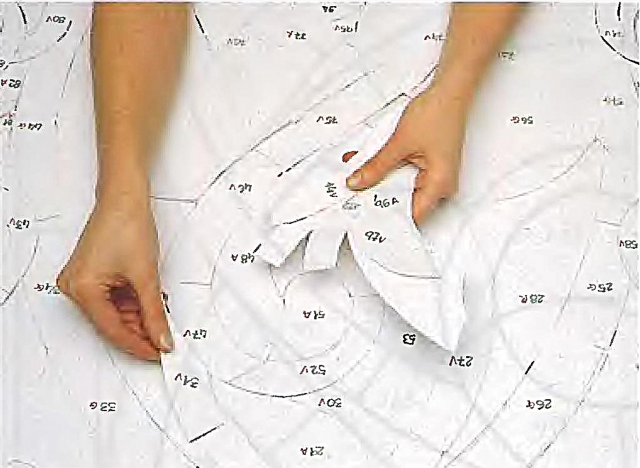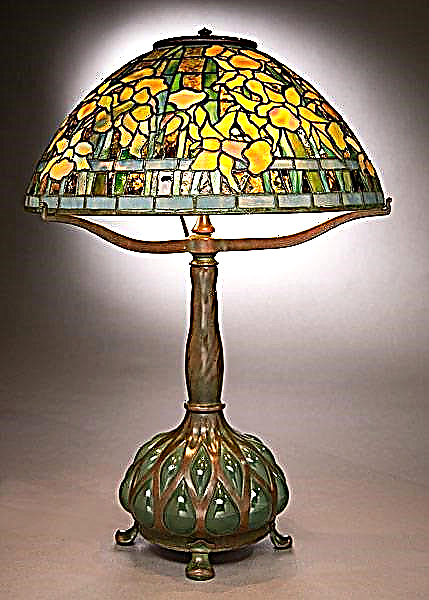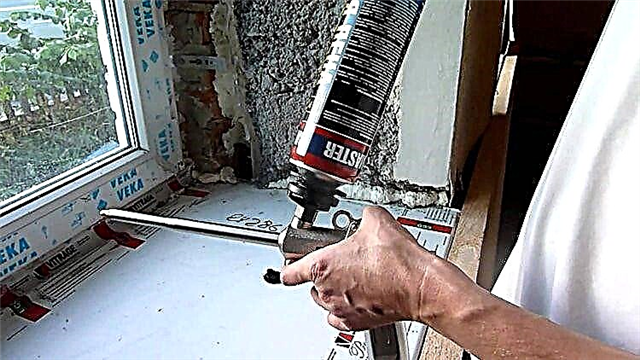We bring to your attention Tiffany lamps and chandeliers (Tiffany) to create a cozy and stylish interior in a country style. The founder of the direction, Louis Tiffany, was engaged in the creation of new types of glass and revived the forgotten glass technique - stained glass. The material from which the tiffany chandeliers and sconces are made is created into hand-made, frozen glass, ground into powder, and baked again with dyes and various additives, thus obtaining a colorful material for the manufacture of these works of art called mica.
Here you will find lamps, table lamps, floor lamps, sconces and Tiffany chandeliers from Velante and Omnilux in floral and fruit themes, ideally suited to the kitchen or dining room. Also Tiffany chandeliers (Tiffany) are ideally combined with interiors in pastel, beige, warm brown tones, as well as with various options for green and emerald tones.
The Uyutny-Svet.rf store especially recommends paying attention to such distinguished manufacturers of Tiffany chandeliers and lamps as:
Lamps, sconces, table lamps or floor lamps in the Tiffany style are ideal for creating a cozy and stylish atmosphere in your apartment. You can buy Tiffany lamps for sale in our official online store and create a fabulous style framed by floral patterns. Soft diffused light will create amazing lighting and fabulous cosiness in your interior. You can buy Tiffany lamps and chandeliers (Tiffany) in Moscow in our Uyutny-Svet.rf store with delivery in Russia. Place an order and we will bring
History of Tiffani
Tiffany lamps got their name from the creator of a special technique for working with glass. The inventor was the American artist Louis Comfort Tiffany (1848 - 1933). He was considered one of the leading designers of his time and a great master of stained glass.
Louis Tiffany has made stained glass a new form of art. He studied in Paris, visited many countries, collecting information about the possibilities of glass and working with it. Products and samples of glass, which he presented at the Paris exhibition, he called favrile. This exhibition brought him worldwide fame.
In Russia, the first mention of opal glass appeared at the end of the 19th century. In stained glass workshops, advertisements mentioning Tiffany glasses could be seen. Then his lamps appeared on sale. Opalescent glasses appeared in the warehouses of Russian factories and plants (they were invented by John La Farge, an American monumental artist), but the production did not dare to work with them.
Returning to his homeland in the United States, Tiffany created his own studio of the same name. She worked with wealthy clients, helping in the design of private homes and interiors, as well as offices, churches. Reception halls of the White House also designed the studio of Louis.
Louis Tiffany created glass stained glass, jewelry and lampshades for lamps. But the biggest passion was stained glass. He considered them a special subject, located on the verge of worlds: in front of the stained glass window and behind it. Stained glass transmits natural light, but hides what is outside the window, and the interior is transformed by bright colors.
About Tiffany Technique
The technique was developed in the late 19th century by the son of a famous jeweler. Before Tiffany, such a technology for stained glass did not exist. It consisted of the following: each piece of colored glass was wrapped around the edge with copper foil. Then they were laid out on a cardboard, where the pattern / sketch of the future pattern was applied in advance and soldered with tin solder.
This technique made it possible to create elaborate and complex ornaments. The object became lighter in weight and visual perception. And it also became possible to obtain volumetric figures with bends. Now, thanks to this technology, we can admire lamps with colored mosaic glass shades.
Bright stained glass, which was previously only possible to see in churches, palaces and other public buildings, now appeared in houses in the form of lamps. Natural light in them was replaced by electric light, and the stained-glass window became a voluminous rounded ceiling.
Louis Tiffany's artistic abilities and his love of detail were the main factors that brought about the Art Nouveau lamps.
About the features of glass
Tiffany twice worked with La Farge and got acquainted with the technology of opalescent glass and the manufacture of objects from it. He later put the production of glass on a commercial basis. The agreement was officially concluded that stained glass windows, lamp shades and opalescent glass itself will be called Tiffany.
Special effect opalescent glass occurs when a clouding substance is added to the composition: tin or burnt bone. Then, small drops of phosphate glass are formed in the glass mass, which give the effect of "clouding". When adding different amounts of opacifying substances, different opal effects are obtained.
Another signature Tiffany type of glass is iridescent. It turns out when sprinkled with metal grains on a finished, but not yet chilled glass. A specific metallic rainbow shine appears on the surface. Iris glass appeared before Tiffany, but it became known thanks to him.
Tiffany also popularized Folded glass draped. The soft plate of the heated glass is deformed during the production process, getting the necessary folds / draperies. This method was often used to create large stained-glass windows, when portraying foliage and plant motifs.
Interesting facts about Tiffany
In 2007, it was discovered that a woman named Clara Pierce Walcott made the main contribution to the design of Tiffany's ceiling paintings. That is, Louis did not invent them himself. Clara worked in the unit with the unofficial name “Tiffany Girls”. It was she who came up with floral ornaments in the Art Nouveau style - Wisteria, Narcissus, Peony.
Here is what is known about her life: born in 1861 in the state of Ohio near Cleveland, was interested in art. She graduated from the Art School of the Arts at the Metropolitan Museum of Art. There Tiffany noticed her and hired her in 1888, when Clara was 27.
Her first work was the Daffodils. During her career, Clara has developed 30 patterns of fixtures. The famous Dragonfly, which shone at an exhibition in Paris in 1900, is also her designer find.
Clara worked at Tiffany for 20 years. In 1909, she got married and was forced to leave the company. Louis Tiffany forbade employees to marry, because he believed that personal life and family distract from work.
History of Tiffany Lamps
For the first time in 1893, the Tiffany Lamps were on display at the World Colombian Fair in Chicago. Models attracted everyone's attention with sophistication, magnificent play of light, perfect performance. Art critics Julius Lessing, one of the leaders of the Berlin Museum, immediately acquired several pieces for the exhibition of the Museum of Decorative Arts in Berlin. The earliest Tiffany lamps made of blown or lead glass and bronze were designed for kerosene lamps. When electric light became available and gained popularity, Tiffany began to offer his customers a choice: a design for either oil or electric lighting.
In 1895, the first serial production of Tiffany lamps was made. They were available in various sizes and styles. Thousands of lamps, in multiple designs, were produced in Tiffany's workshops. Despite the fact that some models were mass-produced, each lampshade was unique due to the unique shades and types of glass. In order to make the lamps even more individual, most of the lampshades were removable. This allowed them to be combined with different metal bases, taking into account the tastes and needs of customers.
After the 1897 Dresden International Exhibition and the Tiffany Glass Company series of exhibitions held in Germany and Austria-Hungary, Tiffany lamps and other products became popular in this part of Europe. But in other countries, especially in France, where society was regarded as an American art and craft, it was possible to gain popularity only thanks to the contract and the assistance of art dealer Siegfried Bing.
In 1894, Siegfried Bing visited the Tiffany Glass Company, after which he began to promote the company's products for European demand. In his famous Parisian Art Nouveau gallery Maison De L'Art Nouveau (1895–1904), Bing presented and sold paintings, sculptures, jewelry, ceramics, textiles, glass, furniture, stained glass. Contributed to the global distribution of works of art in the art market, supplying them to private collectors and museums. He promoted the careers of many subsequently famous artists, designers, sculptors, architects. He was the exclusive European dealer of large American companies: ceramic from Centenati, earthenware from Boston and Tiffany Glass Company. Without Bing’s cooperation, after his death in 1905, Tiffany’s products began to be sold with less success, the European audience lost interest in them. Although the stained glass technique for lampshades itself was borrowed and used in European art nouveau products.
In America, demand for Tiffany lamps fell significantly from the middle of 1910, although their production continued until the early thirties. Then they were forgotten for a long time, they had no place in newfangled interiors. In the 1970s, interest in lamps increased again, and since the eighties, has grown into a real mania. At the peak of their popularity, lamp designs were copied by many manufacturers, similar lamps were created using Tiffany technology. Genuine Tiffany lamps were distinguished by a variety of types of glass in each model. It was never just stained glass, each element had color transitions and a special texture. Sophisticated, sculpturally made, decoratively decorated metal bases also became a feature of Tiffany.
Technology of stained glass Tiffany lampshades

In the beginning, a sketch was created in the form of a lampshade. A drawing on paper was drawn on it, and each fragment of the pattern was numbered. According to the drawing, a template was cut out of cardboard, which was sometimes poured out of brass as a guide for cutting. Each template had a number corresponding to the figure.

Parts from a large glass sheet or stained glass remains were cut out using a glass-cutter, all excesses and irregularities were removed with pliers. Along the perimeter, each fragment was wrapped in a thin strip of copper foil, the edges of which were bent on both sides of the part.

The lampshade was assembled on a wooden form with a drawn pattern, fragments of a pattern were placed on it and soldered one at a time with a soldering iron and tin solder. For each model, a new wooden form was specially cut.


On the inside, all copper foil compounds were also soldered.

If the selection and cutting of glass was carried out in a female workshop, then copper foil finish, assembly and soldering were done in the assembly workshop by men.

Poppy Lamp
Models in the "Poppies" pattern are very popular among collectors. The cost ranges from $ 80,000 to $ 130,000. In 2013, a copy was sold for $ 135,750, which had an expensive twisted vine base. Probably with a different base, the lamp would cost closer to $ 100,000.

DAFFODIL AND NARCISSUS lamp
The model "Zhinkol and daffodils" was created in 1905. A magnificent copy on the complex bronze base "Twisted leg water lily", with tonal and color transitions in every detail of the lampshade. With an estimated value of $ 100,000-150,000, it was sold in 2013 at Sotheby's auction for 191,000 USD.

Lamps from the Louis C. Tiffany Treasure Museum Japanese Garden
In 1912, works by Michaan at the Louis C. Tiffany Treasury Museum of Japan appeared by Takeo Horiuchi, a passionate admirer of L. Tiffany's work and the owner of perhaps the largest collection of his works. The auction attracted many wealthy collectors: the exhibits of the Takeo Horiuchi Museum contain indisputable originals, rare and most beautiful works by Tiffany Studio.


Laburnum lampshade is an example of the most successful interpretations of a flowering tree. The rather rare “Bird Skeleton” base resembles a tree trunk and roots. In 1906, the lampshade cost $ 175, the base - $ 90. From the collection of the Matsue Garden Museum, Japan. The initial cost of Michaan: $ 500,000-600,000.


Peony table lamp with a lampshade designed by Clara Driscoll. Base "Crabs" has been in the production of the company since 1898 and was made for gas lighting. At the Michaan auction, the item was put up with a preliminary cost of $ 200,000-300,000. Origin: Museum Collection Garden, Matsue, Japan.
Pink Lotus Lamp
For some time, the Pink Lotus was the most expensive lamp purchased at auction. One of the earliest, most elegant and sophisticated models, in December 1997, sold at Christie's for $ 2,800,000. Unfortunately, the copy has not been exhibited anywhere since then, and high-quality photographs that convey the beauty of the subject to the full were not found.

Spiderweb Lamp
The Web was developed in 1899, first introduced by L. K. Tiffany at the exhibition in 1900, then in 1901. Initially, the models were intended for kerosene lighting, because fuel tanks were masterfully disguised in mosaic, floral balusters. A few years after the release of the first "Web", her project was changed to electricity, for which the wick and glass chimney were replaced with a device of three bulbs. Since its inception, it has been an extremely expensive design, designed for the richest customers of the company. Its price in 1906 was at $ 500, with an average wage in the country of 22 cents per hour. Now Spiderweb remains one of the most attractive Tiffany lamps and the most expensive. In 2012, the Web was sold at Sotheby's for $ 3,250,000 at an initial bid of $ 2,500,000. Only seven designs of this model are known in the world. In the photo - a copy recognized as the best in color, glass selection and safety. The height of the lamp is 30 1/4 inches, the diameter of the lampshade is 19 inches.

Lamp Wisteria
"Wisteria" is perhaps the most iconic design among the lamps produced by Tiffany Studios and is considered an icon of American art nouveau design. Wisteria and Lily in the Pond have been produced since about 1903. They were awarded the main prize in Turin at the first Italian international exhibition d'Arte Moderna Decorativa in 1902. The complex drawing of the lampshade consists of almost 2000 fragments. Each instance is distinguished by its shades of blue, with gradations from cobalt to aquamarine. The cost of Wisteria in 1906 was $ 400. In 2013, at an initial price of $ 600,000–800,000, the Wisteria lamp was sold at Sotheby's for $ 1,565,000. The height of the structure is 26 7/8 inches (68.2 cm), the diameter of the lampshade is 17 3/4 inches (45.1 cm).

Lamp Bat
In 2013, at the Sotheby's, together with the Wisteria, the Bat lamp was exhibited (estimated cost $ 550,000–750,000). The lamp was not sold, although this is one of the rarest models (only five are known). The popular art nouveau plot was rare in the decor by Tiffany. This is one of the earliest models ceased to be produced in 1910, when Tiffany Studios stopped making metal bases with mosaic inlay, probably due to their high complexity and cost. The stylized bronze spider, which serves as a lampshade cover, was originally created for the Spider model.

Nameless lamp
Perhaps this lamp is the most unique. It has no name and remains in a single copy. The developed project was not put into production. Obviously, the item was not intended for sale. Lampshade without branding. On the bronze mosaic base there is a print of TIFFANY STUDIOS NEW. YORK.
The design remained in the studio until the closure and bankruptcy of the enterprise. After the death of L.K. The Tiffany lamp was sold by a public successor to the artist Charles Berman in 1938. Having changed several owners, the lamp was put up for auction twice by Sothebys auction in 1985 and 1992. The last owner is Takeo Horiuchi.The vase is sold at Michaan auction with an initial cost of $ 1,000,000–1,500,000. If the item is purchased, I wonder what will be its final price?

Brand on lamps
On each lampshade there were such print options with an indispensable model number:


The bases contained such an impression:
For a short time, the impression on the bases contained a monogram:

The matching lampshade and base number indicate that the objects were created for the same model, thereby raising the cost of the lamp.



